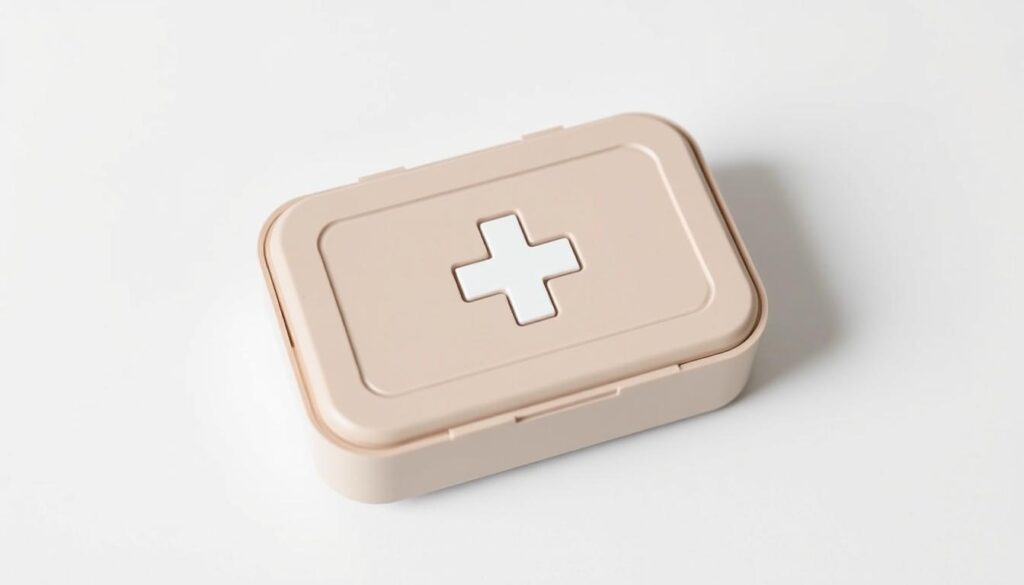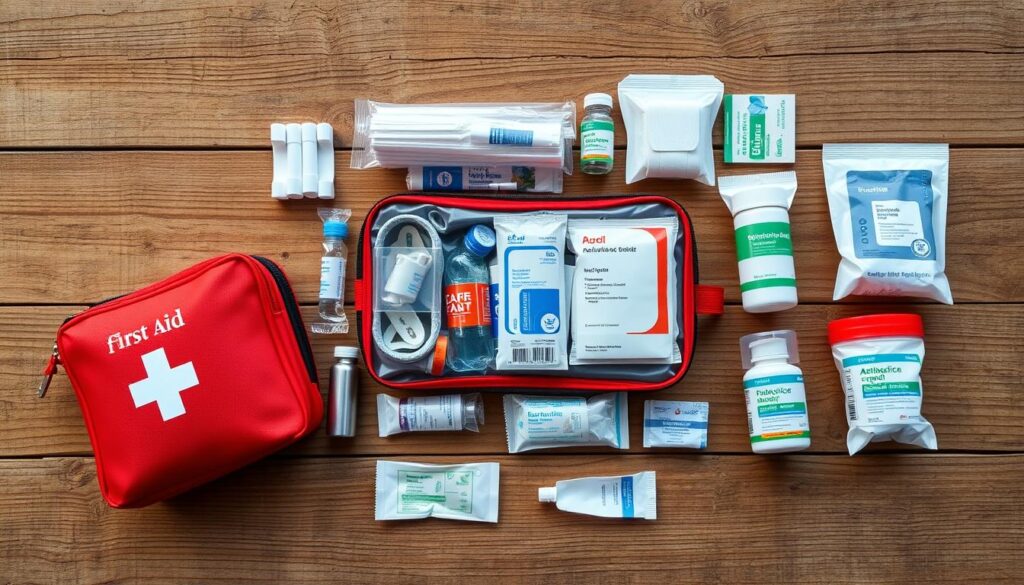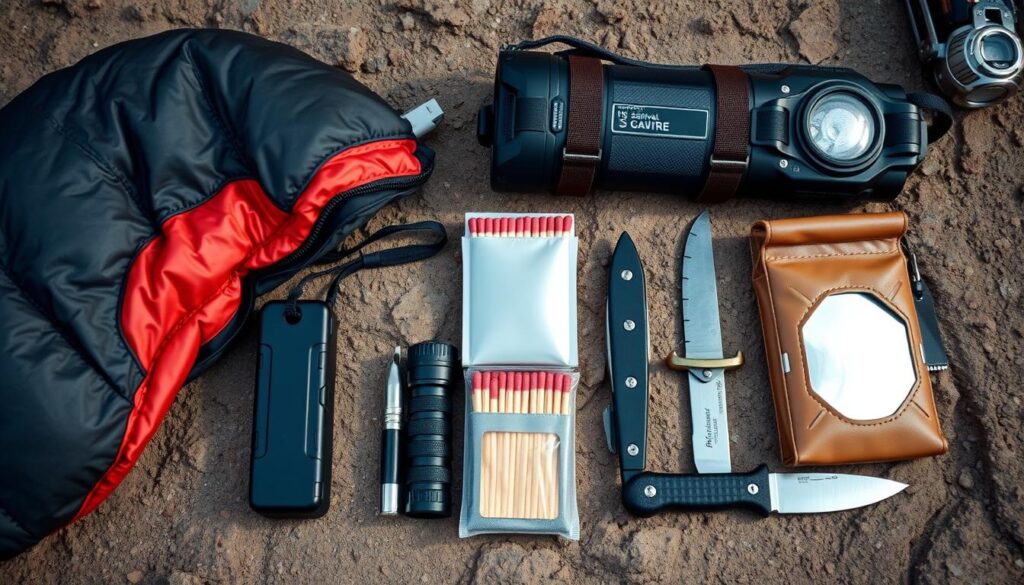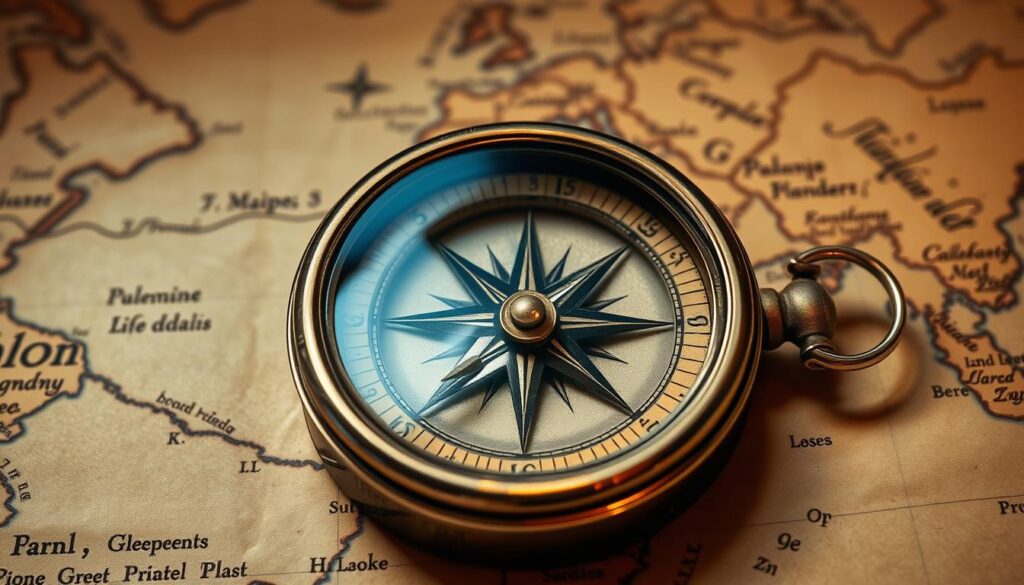When I’m getting ready for a trip, I always make sure to pack a travel first aid kit. The American Red Cross says it’s key to have a first aid kit ready for emergencies. I learned this the hard way, once needing it in a foreign country for a minor injury.
In this article, I’ll show you how to pack a compact first aid kit that’s saved me many times. Being ready for anything is vital, and the right kit can be a game-changer.
Key Takeaways
- Understanding the importance of a well-stocked first aid kit for travel.
- Learning how to pack a compact and efficient kit.
- Identifying essential items to include in your travel first aid kit.
- Tips for customizing your kit based on your travel plans.
- Best practices for maintaining and updating your kit.
Understanding the Importance of a Compact First Aid Kit
Traveling means you might face minor medical emergencies. The American College of Emergency Physicians and the CDC say it’s smart to carry a first aid kit. This shows how key it is to be ready for medical surprises on the road.
Why Every Traveler Should Have One
Every traveler needs a compact first aid kit. It helps with minor injuries and stops bigger problems. For example, antiseptic wipes and bandages can treat cuts and scrapes, preventing infections. Also, pain relievers and antihistamines can ease discomfort and handle allergic reactions.
Potential Risks While Traveling
Travelers face many risks, from small injuries to serious health issues. New places can bring new health dangers. For instance, high places can cause altitude sickness, and some areas have infectious diseases.
Peace of Mind on the Road
A compact first aid kit gives you peace of mind. It means you’re ready for medical emergencies. This lets you travel without worry, knowing you can handle any situation.
Choosing the Right Container for My Kit
Choosing the right container for a portable first aid kit is key for any traveler. The container not only holds the medical supplies but also affects the kit’s portability and ease of use. Dr. Neha Vyas suggests selecting a small box or zip-up bag and labeling it clearly for a travel first aid kit.

Factors to Consider: Size and Durability
The size and durability of the container are essential. A container that’s too small might not fit all the items, while one that’s too big is hard to carry. A hard plastic case or a durable nylon bag strikes a good balance between size and portability. It should also be tough enough to handle travel’s challenges, like bumps and different weather conditions.
Recommended Materials for Storage
The material of the container is also very important. Common choices include water-resistant nylon, hard plastic, and metal. Materials that resist water are great for keeping the contents dry. For example, a waterproof pouch is a smart pick for a first aid kit, perfect for humid or wet places.
Popular Brands and Options
Many brands offer top-notch containers for a compact first aid kit. Some well-known ones are MFA Medical, Adventure Medical Kits, and REI. These brands have a variety of containers for different needs, from simple kits to full first aid sets. When picking a brand, look at quality, durability, and customer reviews to make sure you’re getting a good product.
Essential Items to Include in My Kit
A well-stocked first aid kit is key for travelers. It helps with minor injuries and stops more serious problems.
When making a small first aid kit or mini first aid kit, pick a range of essential items. These should cover different injuries and health issues.
Adhesive Bandages and Sterile Gauze
Adhesive bandages are a must-have. They cover cuts and scrapes. They come in many sizes for all wound sizes.
Sterile gauze is for applying pressure, cleaning wounds, and dressing serious cuts or burns.
| Type | Use |
|---|---|
| Adhesive Bandages | Wound Coverage |
| Sterile Gauze | Wound Cleaning and Dressing |
Antiseptic Wipes and Creams
Antiseptic wipes clean wounds and fight infection. They are pre-moistened with an antiseptic solution.
Antiseptic creams prevent infection in minor cuts and scrapes. They help wounds heal well.
Pain Relievers and Allergy Medications
Pain relievers like acetaminophen or ibuprofen ease pain and lower fever. They’re important for managing injury or illness discomfort.
Allergy medications, including antihistamines, treat allergic reactions. They can be mild or severe.
Customizing My Kit for Specific Destinations
When I plan a trip, I think about what my destination needs. Whether it’s the wilderness or a bustling city, the right supplies are key. This ensures my first aid kit is ready for anything.
Outdoor Adventures vs. Urban Travel
For outdoor adventures, my kit must handle nature’s challenges. This means items for blisters, tick bites, and minor scrapes. On the other hand, urban travel requires supplies for city accidents and health issues.

Tailoring Contents for Family Trips
Traveling with family means my kit needs extra care. I add pediatric meds, extra bandages, and items for age-related health issues. This ensures everyone’s safety.
- Include pediatric medications and dosages.
- Add supplies for managing common age-related health issues.
- Consider including a guide or manual for administering first aid to children or the elderly.
Adjusting for Different Climate Conditions
Climate affects what’s in my first aid kit. In hot, humid places, bug protection is vital. In cold areas, items for hypothermia or frostbite are a must.
- For hot climates, include sunburn relief and hydration remedies.
- For cold climates, add supplies for treating hypothermia or frostbite.
How to Organize My First Aid Kit Effectively
To get the most out of my compact first aid kit, I need to organize it well. This makes it easy to find the first aid supplies I need fast. A tidy kit saves time and reduces stress in emergencies.
Separate Compartments for Easy Access
Using separate compartments is a smart way to organize my first aid kit. Small pouches, containers, or dividers help a lot. For example, I can have one area for wound care with adhesive bandages and sterile gauze. Another area is for medications like pain relievers and allergy medications.
Labeling and Color-Coding for Quick Reference
Labeling and color-coding are key for quick access. Clear labels on each compartment help me find what I need fast. Using color-coded labels for different items makes it easier to find what’s needed quickly.
- Use bright colors for critical or frequently used items.
- Employ clear labels to indicate the contents of each compartment.
- Consider using a legend or key if the color-coding system is complex.
By using these tips, my compact first aid kit will be both stocked and organized. This makes it easier to handle emergencies effectively.
Packing My Kit for Flights and Road Trips
When I pack my first aid kit for flights and road trips, I must follow certain rules. This ensures I’m ready for any emergency.
For air travel, I need to follow the TSA’s rules for carry-on bags. I must label and store medications clearly in a resealable bag for screening.
Regulations for Air Travel with Medications
The TSA has clear rules for carrying medications and medical gear on planes. I must tell security about all my medications and medical devices. Keeping them in their original packaging or with a doctor’s note helps avoid problems.
Some key items for air travel include:
- Prescription medications in their original, labeled containers
- Needles and syringes with a doctor’s note or prescription label
- Certain medical equipment like insulin pumps or nebulizers, which should be declared and may require additional screening

Tips for Car Packing Efficiency
For road trips, packing smart is important. I should pick a kit that’s small and easy to use. A kit with separate compartments helps a lot.
Here are some car packing tips:
- Keep the first aid kit in a spot that’s easy to reach, like under the front seat or in the glove compartment.
- Make sure the kit is clearly labeled so I can find what I need fast.
- Check the kit often to make sure everything is good to use and not expired.
Checking Expiration Dates and Replenishing Supplies
Keeping your first aid kit up to date is a continuous task. It’s key to check the expiration dates of your small first aid kit or mini first aid kit supplies regularly. This way, you can rest assured that your kit is always ready to go.
Importance of Regular Kit Maintenance
It’s vital to regularly check and maintain your first aid kit. This ensures that all supplies are good to use when you need them. Using expired items can be risky, as they might not work as they should.
How to Create a Replenishment Schedule
To keep your kit in top shape, make a schedule for replenishing supplies. First, go through your kit and check the expiration dates. Make a list of what needs to be replaced and when. Setting reminders can help you stay on track.
For example, you might want to check your kit every six months. This way, you can make sure it’s always stocked and ready for emergencies.
| Item | Expiration Date | Replenishment Date |
|---|---|---|
| Antiseptic Wipes | 2024-06-01 | 2024-06-15 |
| Pain Relievers | 2024-09-01 | 2024-09-15 |
| Bandages | N/A | As needed |
By sticking to this routine, your small first aid kit or mini first aid kit will always be ready for minor emergencies on the go.
Educational Resources for First Aid Training
Having a compact medical kit is great, but knowing how to use it is even better. As a traveler, learning basic first aid is key. It helps you handle emergencies on the go.
I’ve looked for educational resources to go with my first aid kit. These resources teach me how to respond to emergencies. They also boost my confidence to explore new places.
Recommended Courses and Certifications
I suggest taking a first aid course that covers the basics. This includes wound care, CPR, and using an Automated External Defibrillator (AED). The American Red Cross and St. John Ambulance offer recognized certifications. These courses teach you how to handle emergencies well.
- First Aid for Children
- CPR/AED Certification
- Wound Care and Bleeding Control
Online Resources and Apps for First Aid Guides
There are also online resources and apps that are great first aid guides. These digital tools give you quick access to first aid info. This is very helpful in emergencies. Some top resources include:
- First Aid Apps: Apps like First Aid by American Red Cross and St. John First Aid guide you through emergencies step by step.
- Online Guides: Sites like WebMD and Mayo Clinic have lots of info on first aid and emergency care.
Using these educational resources, I’m ready to face medical emergencies while traveling. This makes my trips safer and more fun.
Tips for Handling Emergencies While Traveling
Dealing with emergencies while traveling needs a clear mind and the right info. Emergencies can pop up anytime, from small injuries to serious health issues. Being ready and knowing how to act can be a game-changer.
Staying Calm and Assessing the Situation
First, stay calm when an emergency hits. Panic can mess up your thinking and lead to bad choices. Take a few deep breaths, think it through, and figure out what to do next.
For example, if someone gets hurt, check for bleeding or broken bones. If it’s a health issue, try to understand the symptoms and how bad it is. Staying calm helps you think straight and make smart choices.
Knowing When to Seek Professional Help
Having a travel first aid kit is key, but knowing when to get professional help is just as important. Not every medical problem can be fixed with basic first aid. For serious injuries or health issues, like severe allergic reactions or trouble breathing, get help right away.
If you’re not sure about a situation or what to do, it’s safer to be cautious. Look for local hospitals or call emergency services if needed. Having emergency services’ contact info handy can save a lot of time.
| Emergency Situation | Action to Take |
|---|---|
| Severe Injury or Bleeding | Seek immediate medical help |
| Minor Injury | Provide basic first aid |
| Medical Condition (e.g., allergic reaction) | Assess severity, consider seeking medical help |
Documenting My Travel First Aid Experiences
Keeping a record of my compact first aid kit use is key. It helps me see what needs to get better and improve it for future trips. This way, I can be ready for emergencies better.
It’s not just about noting incidents. It’s about seeing how well my kit works and my choices under stress. This helps me spot trends and figure out the best ways to handle different situations.
Keeping a Journal of What Worked
I keep a journal to document my experiences. After each trip, I write about any times I used my emergency medical kit. I detail what happened, how I reacted, and the results. This helps me learn and improve my kit for the next trip.
For example, on a hike, I treated a small cut with my kit. I wrote down the details, like the wound size and treatment. This showed me to always carry a specific bandage for cuts.
Learning from Mistakes and Successes
Recording both my wins and losses is important. It lets me see what worked and what didn’t. For instance, forgetting to restock a key medicine taught me to check my kit more often.
This habit has made me better at handling emergencies. It’s helped me tailor my compact first aid kit to my travel needs. Now, I’m always ready for anything.
Final Thoughts on Being Prepared While Traveling
Thinking about a compact first aid kit makes me realize how important being ready is. With over a decade of traveling and a wilderness first aid certification, I know a good kit is essential. It’s vital for any adventure.
A portable first aid kit is not just a precaution; it’s a must-have for travelers. Whether you’re hiking or exploring cities, a lightweight first aid kit can save your life. I make sure my kit is easy to reach and has all the basics like bandages, wipes, pain relievers, and my meds.
Embracing the Adventure with Confidence
Having a compact first aid kit lets me enjoy the adventure without worry. For example, Surviveware’s Small Premium First Aid Kit has helped me in many situations. It’s about being proactive and taking care of your safety.
Encouraging Others to Pack Their Own Kits
I tell other travelers to be proactive too. Packing a portable first aid kit is a simple way to be ready for anything. With a kit that’s both light and full-featured, you can handle small emergencies and avoid bigger problems. So, start safer travels by packing your own kit today.
FAQ
What is a compact first aid kit, and why is it essential for travelers?
A compact first aid kit is a small set of medical supplies. It helps with minor injuries and emergencies. Travelers find it essential for peace of mind and quick response to medical needs away from home.
What are the most critical items to include in a compact first aid kit?
Key items are adhesive bandages, sterile gauze, antiseptic wipes, pain relievers, and allergy medications. These address common issues like cuts, scrapes, and allergic reactions.
How do I choose the right container for my compact first aid kit?
Choose a container based on size, durability, and material. Opt for something compact, waterproof, and easy to access for your essential supplies.
Can I customize my compact first aid kit based on my travel plans?
Yes, you can customize your kit for different travel types, like outdoor adventures or family trips. Adjust the contents for various climates.
How often should I check the expiration dates of the supplies in my compact first aid kit?
Check expiration dates every 6-12 months. This ensures your supplies are effective and safe to use.
What are some tips for organizing a compact first aid kit effectively?
Use separate compartments, labeling, and color-coding. This makes supplies easy to access and quick to reference in emergencies.
Are there any specific regulations I should be aware of when packing a compact first aid kit for air travel?
Yes, know the air travel rules for medications and liquids in your kit. Pack correctly to avoid security issues.
How can I stay prepared for emergencies while traveling?
To stay prepared, stay calm, assess the situation, and know when to seek professional help. A compact first aid kit and basic first aid knowledge are key.
Why is it essential to document my travel first aid experiences?
Documenting your experiences helps you learn from successes and mistakes. It improves your future first aid kit preparations.
What are some recommended resources for first aid training and education?
Recommended resources include online courses, certifications, and apps. They provide first aid guides and training to complement your kit.



